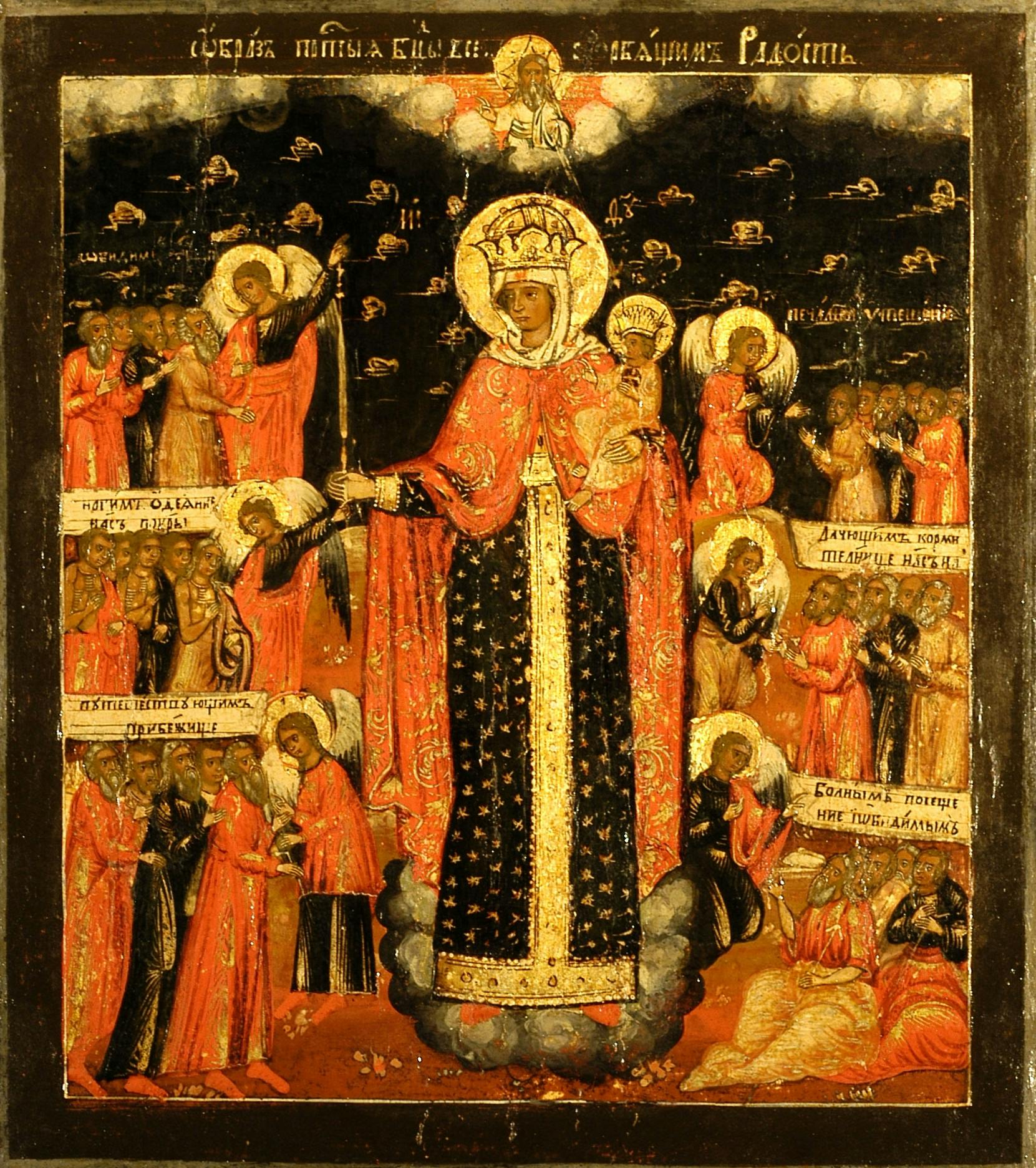The Mother of God, Joy of All Who Sorrow (1890 n. 9324)
Central Russia
The characteristic feature of the depiction of Mary as bringing joy to all those who suffer is the presence of a group of supplicants receiving comfort for their sufferings from the mother of God and relief from the angels. Identified by inscriptions, the suffering people are divided up into six groups, to the left the offended, the naked and pilgrims, to the right the suffering, hungry and grieving. Deriving in the first instance from a hymn from a Greek Orthodox religious rites book containing eight dominical offices, the Octoechos, (“Joy of all who sorrow, you are the rescuer of the abandoned, food for the poor, comfort for pilgrims, a support for the blind, help for the weak, protector and intercessor for the suffering, the orphans and compassion from the Most High, oh most pure, make haste, we beg you, to save your servants”) may have been influenced by the appearance of texts telling of the miracles worked by the Virgin. In any event, it documents the importance accorded to the intercession of the Mother of God in the religious beliefs of the day.
Compared to other contemporary icons in the Uffizi collections, the painting demonstrates a more precise and faithful emulation of the style of the Moscow Kremlin Armoury Master, showing some finesse in the application of the gold to the clothing and a certain delicacy of style. These characteristics may mean that the panel was painted slightly earlier than most of the Uffizi icons, which date to around 1725-40.
